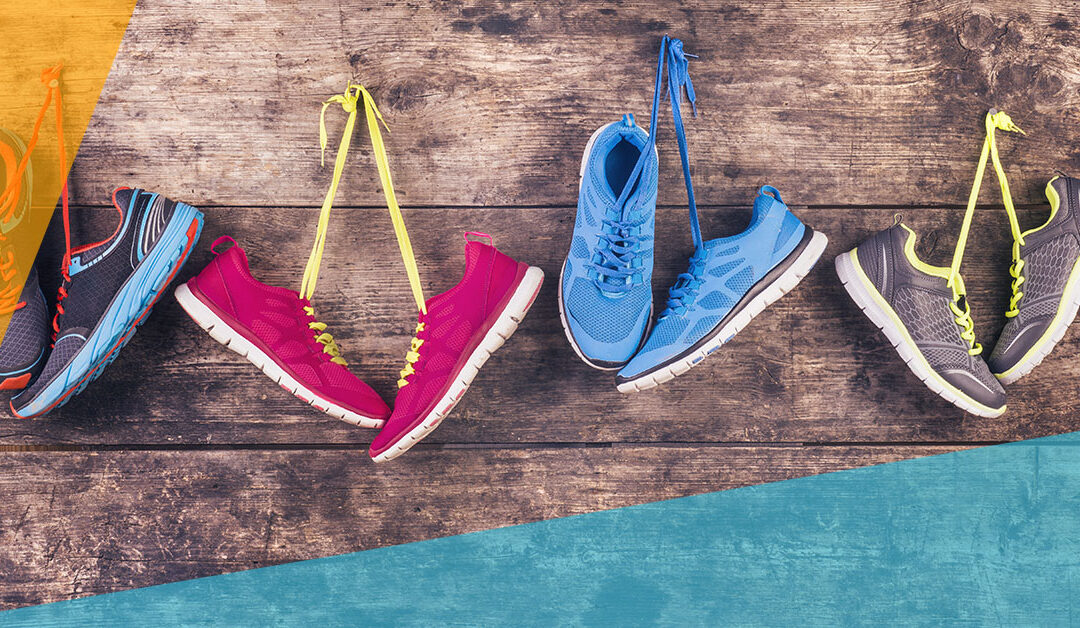Picking out a new pair of shoes is a difficult process. There are so many factors involved when selecting the right pair, and it doesn’t help that false information about footwear can be found everywhere, from major sports magazines to your local sports store.
An abundance of old wives’ tales and falsely based claims about shoes are being pushed by marketing campaigns to stimulate business. However, many of these fallacies are outdated and simply incorrect about today’s modern footwear. Likewise, buying a good pair of shoes should be a well-thought-out investment, not an impulse buy. If you pick the right pair, they’ll be with you for a while. If you don’t, they might stick around for a few months—and make your feet hurt too.
Buying a good pair of shoes should be a well-thought-out investment, not an impulse buy. Whether you are buying running shoes or even just regular sneakers, your choices are likely influenced by six of the most common footwear misconceptions.
Let’s debunk them.
1. You Have To Break In Your Shoes
One of the most commonly held misconceptions about new shoes is that you will need to break them in before they fit correctly, or at least feel comfortable.
This belief has caused people to intentionally rough-up their new footwear in hopes of making them more comfortable. Yet, this usually just contributes to needless premature degradation. Techniques such as zapping them in the microwave or running them over them with a car are two examples of how to never break in a new shoe.
While it may be true that brand-new leather shoes take some time to adjust to your feet, almost every other type of footwear should feel comfortable from the first step.
Modern footwear technology makes comfort a top priority. As long as you’re buying a reputable brand and have tried a pair on for size, you and your shoes should be just fine.
2. The Best Shoes Are The Most Expensive
Now here’s a marketing tactic we’re all familiar with hearing. Throughout the history of advertising we’ve been led to believe that buying products with the highest price tag means snagging the highest-quality deal, but this is simply not the case.
While it may be true that a steep price can indicate a higher level of footwear technology, durability, or ergonomic comfort, usually the extravagant cost has more to do with branding than quality.
There are plenty of durable, comfortable, good-looking shoe options out there that don’t cost an arm and a leg. You just have to look a little harder to find them.
3. Same-Sized Feet Always Fit The Same Shoe
Contrary to popular belief, people who share the same foot length will not always wear the same shoe size. Having the same foot size as your best friend does not necessarily mean you can comfortably wear their shoes.
This variation is a result of several factors that make a shoe fit comfortably, including arch height, foot broadness, and ankle width. In addition to these visible features, the hidden bone structure of one person’s foot may differ greatly from that of another person’s foot, even if the lengths are the same.
So next time you buy a pair of shoes, don’t use the size of your friend’s similarly structured feet as a guideline. Always use your own proportions as a reference, or have a foot mapping session to help determine your exact needs.
4. Your Feet Are Identical Sizes
No two feet are alike, even when they belong to the same body. It might seem strange that feet are not 100% identical, but they actually function much better as “siblings” rather than “twins”.
The differences between your left and right foot may not be particularly obvious, but in some cases, the differences are so great that each foot fits into an entirely different shoe size.
Bunions, recently broken bones, or genetic abnormalities in the feet may require a professional consultation. Our Athletic Trainer performs gait analyses to assess how the body moves from the ground up and can help you choose shoes that look and feel great on each foot.
5. Insoles Cannot Be Changed
Another commonly held misconception about footwear concerns insoles, which are the padded inserts found on the inside floor of a sneaker.
Understanding the function of insoles is still new for many people. However, performance athletes are beginning to normalize the production of shoes with changeable inserts (also known as foot orthoses or orthotics). Many athletes push their feet to the point of exertion and use insoles to meet their unique performance goals.
Athletes of all kinds may require specific support for their feet to accomplish their performance goals. This increased demand for changeable insoles has in turn made them more available to the public to provide daily comfort, height enhancement, or relief from foot injuries such as plantar fasciitis and bunions.
6. The Lighter The Better
Even though sports shoe brands are constantly promoting lighter, “faster” shoes, wearing a shoe that holds less overall mass does not necessarily mean that you will perform at an improved level.
In fact, lighter shoes often mean less cushioning and support for the foot itself, which can very quickly become uncomfortable or even painful for the wearer. More stress on your foot is the last thing you need when you’re in the middle of a marathon. Next time you pick a new pair of sports shoes, opt for comfort and support over lightness every time.
If you’re struggling to hit your marathon goals, it may be helpful to consider finding a running coach or athletic trainer to guide you in developing a successful training program. These six footwear fallacies prove that a shoe isn’t just a shoe. Next time you shop for the perfect footwear, bear these myths in mind.
Co-author: Megan Howard

